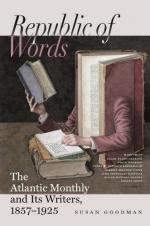The difference between adaptation and non-adaptation will plainly be seen by the comparison below. The railway from Boston to Albany may be divided into four sections, of which the several lengths and corresponding maximum grades are as tabulated.
Length in miles. Steepest grade Boston to Worcester, 44 30 Worcester to Springfield, 541/2 50 Springfield to Pittsfield, 52 83 Pittsfield to Albany, 431/2 45
A load of five hundred tons upon a grade of thirty feet per mile requires of the locomotive a drawing-power of 11,500 lbs.
Upon a 50 feet grade 15,500 lbs.
Upon an 83 feet grade 22,500 lbs.
Upon a 45 feet grade 14,500 lbs.
Now, if the engines are all alike, (as they are very nearly,) and each is able to exert a drawing-power of five thousand pounds to move a load of five hundred tons from Boston to Albany, we need as follows:
B. to W.—11500/5000 or 2 engines.
W. to S.—15500/5000 or 3 engines.
S. to P.—22500/5000 or 5 engines.
P. to A.—14500/5000 or 3 engines.
From which the whole number of miles run by engines for one whole trip would be,—
B. to W. 44 miles by 2 engines,
or 88
W. to S. 541/2 miles by 3 engines, or 1631/2
S. to P. 52 miles by 5 engines, or 260
P. to A. 491/2 miles by 3 engines, or 1481/2
______
And the sum, 660
Now suppose, that, by making the engines for the several divisions strong in proportion to the resistance encountered upon these divisions, one engine only is employed upon each; our mileage becomes,
B. to W. 44 by 1 or 44
W. to S. 541/2 by 1 or 541/2
S. to P. 52 by 1 or 52
P. to A. 49 by 1 or 491/2
_____
And the sum, 200 miles.
And the saving of miles run is therefore 660 less 200, or 460; and if 500 tons pass over the road daily, the annual saving of mileage becomes 460 by 313, or 143,980, or 70 per cent. of the whole. The actual cost for freight-locomotives per ton, per mile run, during the year ending Sept. 30, 1855, was 384/1000 of a cent; and the above 143,980 miles saved, multiplied by this fraction, amounts to $55,288 per annum. The actual expense of working the power will not of course show the whole 70 per cent. of saving, as heavy and strong engines cost more at first, and cost more to operate, than lighter ones; but the figures show the effect of correct adaptation. If we call the saving 50 per cent. only of the mileage, we have then (as the locomotive power consumes 30/100 of the whole cost of operating) 50/100 of 30/100, or 15/100, of the whole cost of working the road, and this by simply knowing how to adapt the machinery to the requirement.




